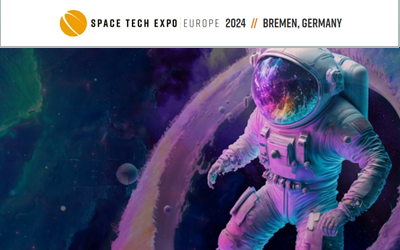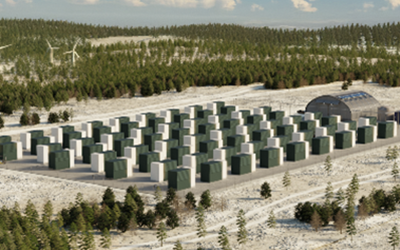Space leaves its mark on materials, with exposure to such a harsh environment having the potential to dramatically change materials or even erode them away entirely. This is why, after years of planning, ESA and the French space agency (CNES) are giving European researchers and engineers the chance to test their materials in the extremes of space via the Europe Material Ageing campaign. ESA BIC Noordwijk alumnus Arceon saw its ceramic composites launched into space earlier this month: destination the International Space Station. Today, the project is highlighted on the ESA Commercialisation Gateway website. Meanwhile, below we share more insights into the background to the project.

Testing underway in space
The Europe Material Ageing (EMA) campaign sent out a call for interest some years ago, in a collaboration between ESA and the French Space Agency (CNES). The EMA programme’s goal is to gain insight about how material ages in low-Earth orbit of the International Space Station (ISS).
Ground test facilities simulating space environmental conditions enabled initial tests to be carried out at ESA/ESTEC in order to qualify materials and spacecraft components and to better understand the degradation mechanisms. As highlighted by Agnieszka Suliga et al. in the journal article: “EMA’s scientific mission offering a platform for testing of material science research and technology directly in flight, on the exterior of the ISS.”
“Almost 50 proposals were received by ESA after the announcement of opportunity, of which 15 proposals with the highest potential were selected to participate in the pilot EMA campaign. The results of the campaign are expected to accelerate the development of European space materials and strengthen the position of the European space market. The pre-flight qualification of the external experimenter and ESA samples has demonstrated the importance of qualification testing in a reliable space environment conditions.”
The material samples were in the payload launched as part of NASA’s SpaceX 31st Resupply Mission in early November 2024. The Airbus Bartolomeo platform, attached externally to the European Columbus Module of the ISS, is being used as a testing opportunity to perform materials science research and calibrate its ground-based testing facilities against the real space environment.
Anticipating payload return
As described in an earlier press release from Airbus: “The mission will study the ageing behaviour of new materials in space and will also make use of Bartolomeo’s payload return option. After a year of exposure in space, the experiments will be returned to Earth, allowing scientists to thoroughly investigate the samples and fully understand the effects of the space environment on the materials.”
To get a better understanding about how material ages beyond Earth’s atmosphere, the materials are now set to spend a minimum of 6 months exposed to the harsh space environment.
Clamped between two aluminium plates in a unit designed, manufactured and assembled by Comat, samples with 20 mm of their exposed surface will cope with temperature extremes, radiation, vacuum and even space debris. The results of the in-space testing are eagerly anticipated.

See the ESA Commercialisation Gateway news story by clicking the visual:



